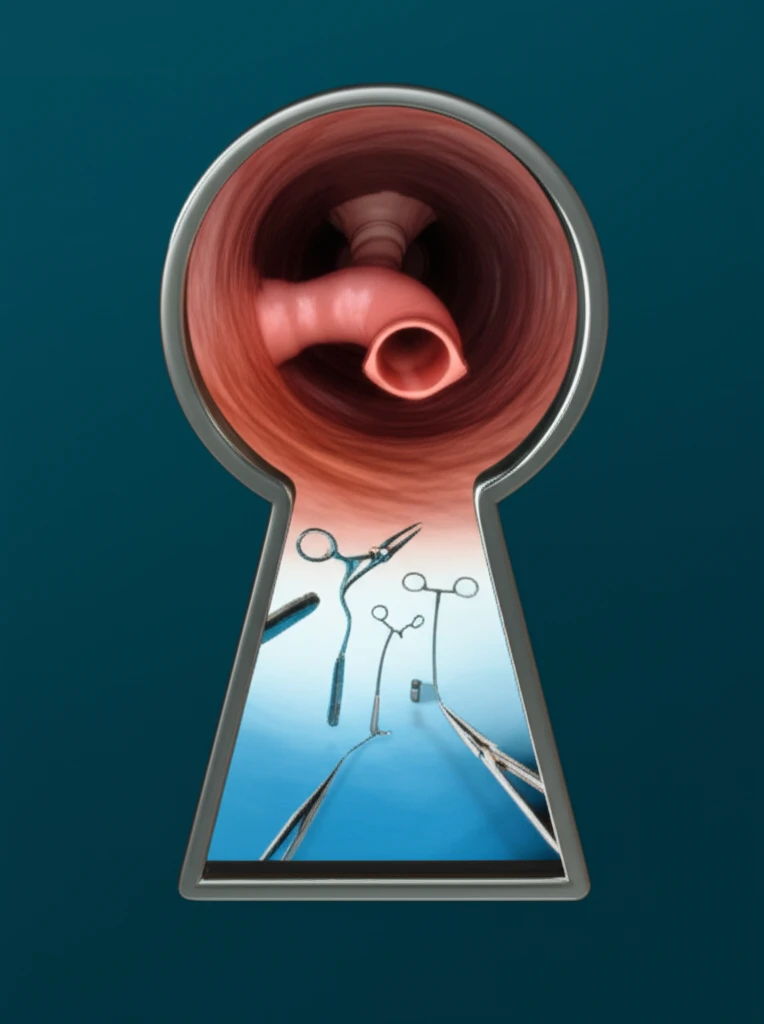
Minimally Invasive Esophageal Surgery: Is It Right for You?
"Exploring the benefits and outcomes of minimally invasive techniques for benign esophageal conditions."
For individuals grappling with esophageal issues, the prospect of surgery can be daunting. Traditional open surgery, while effective, often involves significant recovery time and potential complications. However, advancements in surgical techniques have paved the way for minimally invasive approaches, offering a less invasive alternative for treating various benign esophageal conditions.
Minimally invasive surgery (MIS) utilizes small incisions and specialized instruments to access and repair the esophagus. This approach translates to reduced pain, smaller scars, and a faster recovery compared to traditional surgery. Conditions like hiatal hernias, achalasia, and Barrett's esophagus can often be effectively managed using MIS techniques.
This article delves into the world of minimally invasive esophageal surgery, drawing upon a study of 483 patients who underwent these procedures. We'll explore the types of conditions treated, the surgical techniques employed, and the outcomes observed, providing you with a comprehensive overview of this evolving field.
What Conditions Can Be Treated with Minimally Invasive Esophageal Surgery?

Minimally invasive surgery is employed to address a range of benign esophageal conditions, offering tailored solutions for each specific problem. The study referenced in the original article highlights the effectiveness of MIS in treating:
- Gastroesophageal Reflux Disease (GERD): MIS can be used to perform fundoplication, a procedure that strengthens the lower esophageal sphincter and reduces acid reflux.
- Hiatal Hernias: MIS allows surgeons to repair hiatal hernias by reducing the herniated portion of the stomach and reinforcing the diaphragm.
- Achalasia: MIS can be used to perform a Heller myotomy, a procedure that cuts the muscles of the lower esophageal sphincter, allowing food to pass more easily into the stomach.
- Barrett's Esophagus: While MIS cannot reverse Barrett's esophagus, it can be used to perform procedures that reduce acid reflux, which can help prevent the condition from worsening.
- Esophageal Diverticula: In rare cases, MIS can be used to remove esophageal diverticula, pouches that form in the wall of the esophagus.
The Future of Esophageal Care
Minimally invasive surgery has revolutionized the treatment of benign esophageal diseases, offering patients a less invasive and more effective alternative to traditional open surgery. The results of the study discussed in this article, along with numerous other studies, demonstrate the safety and efficacy of MIS for a variety of esophageal conditions.
As technology continues to advance and surgical techniques continue to evolve, minimally invasive surgery will likely play an even greater role in the treatment of esophageal diseases. This will lead to improved outcomes for patients and a better quality of life.
If you are considering surgery for an esophageal condition, talk to your doctor about whether minimally invasive surgery is right for you. With its many benefits, MIS offers a promising option for those seeking relief from esophageal problems.
